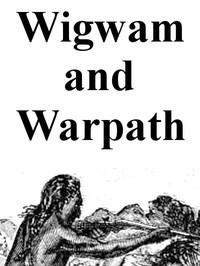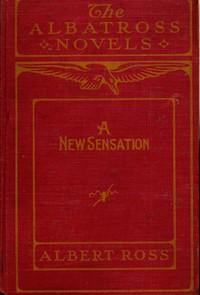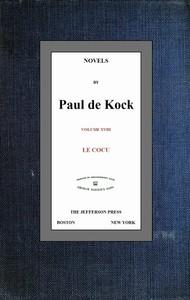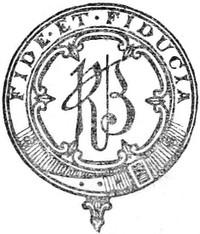Read this ebook for free! No credit card needed, absolutely nothing to pay.
Words: 87849 in 41 pages
This is an ebook sharing website. You can read the uploaded ebooks for free here. No credit cards needed, nothing to pay. If you want to own a digital copy of the ebook, or want to read offline with your favorite ebook-reader, then you can choose to buy and download the ebook.


: The Seaman's Friend Containing a treatise on practical seamanship with plates a dictionary of sea terms customs and usages of the merchant service by Dana Richard Henry - Naval art and science Dictionaries; Naval art and science; Maritime law; Seamanship;
BALLAST AND LADING.--A ship's behavior, as the phrase is, depends as much upon the manner in which she is loaded and ballasted, as upon her model. It is said that a vessel may be prevented from rolling heavily, if, when the ballast is iron, it is stowed up to the floor-heads; because this will bring the ship back, after she has inclined, with less violence, and will act upon a point but little distant from the centre of gravity, and not interfere with her stiff carrying of sail. The cargo should be stowed with the weightier materials as near as possible to the centre of gravity, and high or low, according to the build of the vessel. If the vessel is full and low built, the heavy articles should be stowed high up, that the centre of gravity may be raised and the vessel kept from rolling too much, and from being too laborsome. But a narrow, high-built vessel should have the heavy articles stowed low and near the keelson, which will tend to keep her from being crank, and enable her to carry sail to more advantage.
CUTTING AND FITTING STANDING RIGGING.
Measuring and cutting lower rigging and lower fore-and-aft stays. Fitting the same. Measuring, cutting, and fitting topmast rigging, stays, and backstays. Jib, topgallant, and royal stays. Rattling down rigging. Cutting and fitting lifts, foot-ropes, brace-block straps, and pennants. Breast-backstays.
CUTTING LOWER RIGGING.--Draw a line from the side of the partners abreast of the mast, on the deck, parallel to the channels, and to extend as far aft as they do. On this line mark the places of each dead-eye, corresponding to their places against the channels. Send a line up to the mast-head, and fasten it to the mast by a nail above the bibbs, in a range with the centre of the mast, and opposite to the side the channel line is drawn upon. Then take the bight of the line around the forward part of the mast, and fasten it to the mast by a nail, opposite the first nail, so that the part between the nails will be half the circumference of the mast-head; then take the line down to the mark on the channel line for the forward dead-eye, and mark it as before; and so on, until you have got the distance between the mast and each mark on the channel line. Now cast off the line from the mast-head, and the distance between the end of the line and each mark will give you the length of each shroud from the lower part of the mast-head. And, to make an allowance for one pair of shrouds overlaying another, you may increase the length of the pair put on second, that is, the larboard forward ones, by twice the diameter of the rigging; the third pair by four times; and so on.
The size of the lower rigging should be as much as eight and a half inches for vessels of seven or eight hundred tons, and from seven and a half to eight for smaller vessels, over three hundred tons.
For the length of the fore, main, and mizzen stays and spring-stays, take the distance from the after part of the mast-head to their hearts, or to the place where they are set up, adding once the length of the mast-head for the collar.
The standing stays should be once and half the circumference of the shrouds.
The bolsters under the eyes of the rigging should always be covered with tarred parcelling, marled on.
The starboard forward shroud goes on first; then the larboard; and so on. The fore stay and spring stay go over the shrouds; and the head stays always go over the backstays.
CUTTING AND FITTING TOPMAST RIGGING.--For the forward shroud, measure from the hounds of the topmast down to the after part of the lower trestle-trees, and add to that length half the circumference of the mast-head at the hounds. The eye is once and a quarter the circumference of the mast-head. The topmast rigging in size should be three fifths of the lower rigging. For the topmast backstays, measure the distance from the hounds of the mast down to the centre of the deck, abreast of their dead-eyes in the channels, and add to this length one half the circumference of the mast-head. Add to the length of the larboard pair, which goes on last, twice the diameter of the rope. The size of the fore and main topmast backstays is generally one quarter less than that of the lower rigging; and that of the mizzen topmast backstays the same as that of the main topmast rigging. The size of the topmast stays should be once and a quarter that of the rigging. The topmast rigging is fitted in the same manner as the lower. The backstays should be leathered in the wake of the tops and lower yards. The breast-backstays are turned in upon blocks instead of dead-eyes, and set up with a luff purchase. The fore topmast stay sets up on the starboard, and the spring stay on the larboard side of the bowsprit.
All the fore-and-aft stays are now set up on their ends, and should be leathered in their nips, as well as in their eyes.
The main topmast stay goes through a heart or thimble at the foremast-head, or through a hole in the cap, and sets up on deck or in the top; and the mizzen topmast stay sets up at the mainmast-head, above the rigging.
Free books android app tbrJar TBR JAR Read Free books online gutenberg
More posts by @FreeBooks

: Wigwam and War-path; Or the Royal Chief in Chains Second and Revised Edition by Meacham A B Alfred Benjamin - Indians of North America


: A New Sensation by Ross Albert - Man-woman relationships Fiction; West Indies Fiction; Voyages and travels Fiction; Novelists Fiction; Secretaries Fiction






